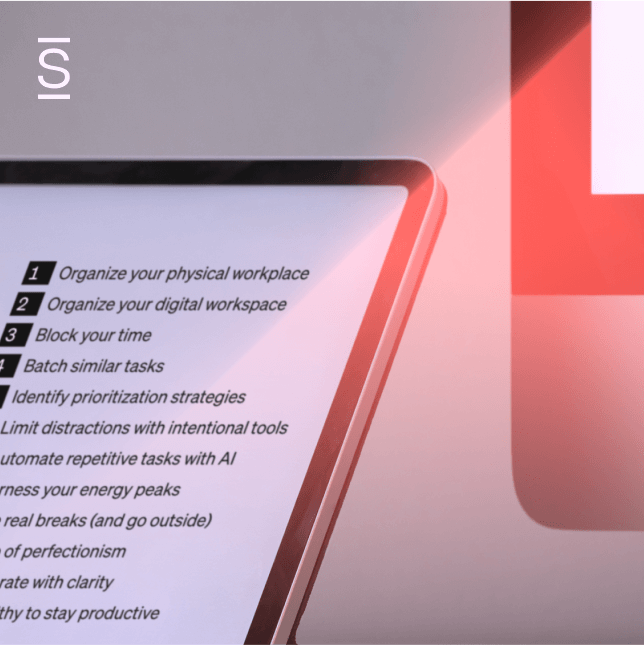Some people call them the “Sunday Scaries.” It’s that feeling in your stomach when you realize it’s Sunday night, House of the Dragon is over, and now you have to face the prospect of starting a new work week. You try to shake it off, realizing that wallowing in the same emotions every Sunday you used to feel on the last day of summer vacation is not only pointless but counterproductive. Monday, like Winter, is coming.
Satisfaction with our jobs, our companies, and the work we do is quite literally the point of job training, college, and the process of finding work. Since we all have to work for a living, the idea of enjoying how we spend that time is paramount. We take classes to be able to get that “dream job.” We search through sites like Glassdoor to see where others report being satisfied with their jobs. Our happiness, health, well-being, and quality of life depend on it. It’s that important. And now, two decades into the 21st century, organizations are finally catching on: employee satisfaction is directly tied to company success.
Why is employee satisfaction so important? Satisfied employees are far more likely to be top performers. When fully engaged, employees work harder and care more about their team’s well-being, performance on KPIs, and the company’s profitability. When you engage employees you boost performance. And top performers can add up to 48% more value to their companies.
Human resources professionals are spreading the word to the C-suite: employee satisfaction can improve burnout and employee turnover metrics.
The meaning of employee satisfaction
There’s no question that the definition of employee satisfaction has evolved over the years. And with those changes came generational angst: older generations have generally been happier in their jobs but had lower expectations of their companies. In a world where no one ever heard of employers safeguarding employee well-being, the essential exchange of a paycheck in exchange for labor was enough. In recent years, however, workers demanded that loyalty should be a two-way street. If companies said that employees were their greatest asset, they reasoned, they should back up the claim with action. According to SHRM’s Employee Job Satisfaction Report, in 2017, employees listed respectful treatment at all levels as one of the most critical factors in job satisfaction, and compensation came in second. Factors like trust between management and employees were also necessary, as were job security and the opportunity to use their skills at work.
It seems pretty simple at the outset, but the meanings are much more profound. “Respect” is an overarching term from basic civility and manners to gender, religious, and cultural diversity to equality, work/life balance, and inclusion. These factors are no longer “perks—.” They’re employee expectations workers require for satisfaction on the job. When companies make measurable improvements, they see increased employee retention and reduced complaints and absenteeism. It can also move a company toward employee engagement even without intentional, sweeping initiatives from the C-suite.
Organizations can help employees find purpose
Gallup’s report on employee engagement says that “People want purpose and meaning from their work. They want to be known for what they’re good at.” The concept of purpose is difficult to define because it’s highly personal. But research from McKinsey showed that 70% of workers closely link their sense of purpose to their jobs.
While we can find personal satisfaction in solving challenges and doing the type of work that inspires us, there’s another element that younger workers, in particular, consider: do the company’s values mirror their own?
A recent Forbes article about employee demands on sustainability noted that as employees spend more time at work, they want to align with employers that share their views. In fact, they actively seek them out because they feel that working for companies that promote equality, sustainability, and social activism will make the work they do more meaningful, both personally and professionally. One report Forbes referenced added that 65% of employees would even be willing to take a pay cut for the opportunity to be part of a company that puts sustainability at the forefront of their values.
Investing in employee development pays dividends all around
One of the biggest drivers of employee satisfaction is professional growth. Whether employees look for opportunities to learn additional skills for positions they target or for ones they already have, the chance to advance is an enormous indicator that companies care about their people. Employee Benefit News looked at more than 34,000 exit interviews and concluded that 22% of employees leaving their jobs did so for career development reasons, and almost as many, 21%, left because of a lack of growth opportunities.
When companies invest in their employees’ development, education, and training, they’re not just offering a benefit to the employee. They’re investing in advancing their workforce, bringing updated skills to the company, and creating a deeper sense of employee satisfaction—a bargain at any cost.
Keeping the conversation flowing
Employee experience is hard to quantify, and some managers are intimidated by the idea of managing employee satisfaction. Fortunately, there are many tools available to help. But keeping tabs on how employees feel about their work, the organization, rules and processes, co-workers, and management is crucial. Employees are often the first ones to alert managers about potential problems brewing, and surveys provide a channel for Your company culture and work environment should encourage open communication at every level. With advance notification, companies can course-correct before a minor irritation turns into a Great Resignation., including regular employee satisfaction surveys — or better yet, employee engagement surveys. In fact, surveys can provide valuable insight into why employees resign and give management a roadmap for retention strategies.
And what’s in it for employees? Employee satisfaction surveys are a sure sign that a company cares about its workers and values their opinions. While it’s also a place to air frustrations and grievances, it’s important to hear what they say. The truth always lies somewhere in the middle between glowing reviews and unbridled complaints. Just be aware that surveys aren’t enough. If you aren’t acting on the results of those surveys, employees will think your concern isn’t genuine, and employee well-being can plummet into disengagement.
Trust and autonomy go hand-in-hand
Before we were all forced to work from home during the pandemic lockdown, it wasn’t unusual to hear employees gripe about strict no-telecommuting rules. The biggest complaint was that companies wanted to watch employees, that management didn’t trust staff members to work unsupervised, and that this distrust made employees feel infantilized and disrespected. And a great deal of employee satisfaction centers around those very issues.
But organizations needn’t worry. According to research by Jose Maria Barrero, Nicholas Bloom, and Steven J. Davis for WFHResearch, 40% of workers realized they were more productive at home during the pandemic than when in the office. The researchers calculated that this work model would increase overall worker productivity in the US by five percent compared to the economy before the lockdown. The study showed that employees would act responsibly and with diligence even when no one was watching.
Though some companies are eager to get employees back in the office, employees can hope that the wide-ranging pandemic-inspired experiment proved a valuable lesson to organizations that valuing employees includes trust, and allowing them to work autonomously. Employee empowerment has been shown to improve everything from customer service and productivity to innovation and communications.
Learn how employee engagement improves customer experiences
To see employee satisfaction, companies must realize that one size does not fit all
We’ve all known it for our whole lives: not all of us are “morning people.” And not everyone has the luxury of a carefree nine-to-five workday. Our kids get out of school at 3:00, and we’ve got to pick them up. Some people have standing medical appointments. Others are their best selves at five in the morning but are burned out by two in the afternoon. Everyone’s lives operate on different schedules, and cookie-cutter work schedules just don’t cut it.
Remote and flexible work options go a long way toward offering employees remote work and flexible work schedules are a huge plus for employee satisfaction. In addition to general wellness, stress reduction, and work/life balance, flexibility is a big part of the equality employees want. Old-fashioned nine-to-five weekdays disproportionately affect women, who also serve as primary caregivers in addition to a full-time job. Allowing for flexibility gives those with multiple top priorities a fair chance to succeed on all fronts.
Employee recognition and security
SHRM’s Employee Job Satisfaction Report reported that job security was among the top five factors in employee satisfaction. While that may be true, in today’s world, indefinite job security is an offer not many companies can offer. Economies change, business conditions change, and while it’s unfortunate, layoffs are common across all industries. As a result, employees always check for signals that a layoff might be coming. From unsanctioned social media rumor groups to unexpected visits from top management, employees are aware of the signs. And it’s pretty hard to maintain a high level of employee satisfaction if you’re constantly watching your back.
But there are some things that organizations can do to quell the unease. Top internet job search website Indeed released a study about why job security matters in which they outlined techniques employers could use. They include common-sense advice like transparent communication that directly addresses the future, hiring from within, and responses to economic downturns with measures other than job cuts.
If you can help employees feel more secure, you’re likely to reduce employee turnover, which will, in turn, lower training and hiring costs. A high level of employee satisfaction is often directly correlated to levels of employee recognition.
A lack of feedback is a leading cause of employee disengagement, which increases turnover rates dramatically. “Employees who feel secure are more likely to stay with your company, and they might continue expanding their skills to advance through the ranks,” Indeed noted. “While workers who underperform aren’t guaranteed job security, recognizing one person’s achievements may inspire someone else to improve.”
Employee satisfaction goes a long way toward building a happy company, which also radiates out to satisfied customers. And happy customers mean a successful company. That’s why employers need to truly mean it when they say their most important asset is their people.
For more detailed employee engagement strategies, read 15 Employee Engagement Ideas for 2022.


















